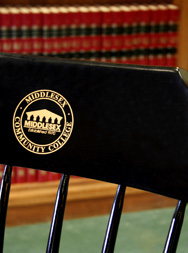




Online Learning Resource Center
at MCC
- Academic Technology
- Blackboard
- Blackboard Faculty Guide
- Blackboard Technical Requirements
- Blackboard Trainings - Basic to Advanced
- Blackboard Tasks
- Blackboard Usage Policy-managing your Bb course size
- Blackboard Collaborate
- Assessment Tools
- Communication Tools
- Zoom Tutorials
- MS Office 365 for students
- Powerpoint
- Social Media Tools
- STEM virtual resources
- Pearson Faculty Tutorials
- VoiceThread
- Willo Folletts Direct Access (no access codes)
- Generative Artificial Intelligence (AI)
- Syllabus Policies
- Online Learning
- Best Practices
- Accessible Documents
- Workshop Webinars (video tutorials)
- Hyflex Instruction
- Instructor Resources
- Student Tutorials
- Blackboard
Instructional Design Principles
Outstanding online courses begin with outstanding content presented in a way that minimizes barriers to understanding.
Effective content design can create a more compelling and engaging showcase for your course material. More importantly, well-designed content can help achieve the following:
- Ease of learning: How quickly can a new student navigate through your course while learning the material?
- Efficiency of use: After a student is familiar with your course setup, how quickly can they accomplish tasks?
- Subjective satisfaction: How much do students enjoy working through your course material?
- Usability: Can users with different levels of ability, experience, knowledge, language skills, hardware, or concentration level use your course easily?
- Accessibility: Products and services that are accessible provide the means for people with disabilities to receive the same level of information, services, and use similar to what people without disabilities receive. Is your course a level playing field?
Effective design can also be a simple and straightforward design. Clean and simple can be aesthetically pleasing and still have an impact. Pages with simple design have the following attributes:
- Download quickly.
- Are easy for students to understand and navigate.
- Create emphasis and predictability.
- Have a fresh, up-to-date feel.
- Are more likely to meet accessibility guidelines.
- A well-designed course requires planning. You must consider not only visual design, but also writing style, tone, the arrangement of information, and accessibility. We will look at each of these elements in more detail.
